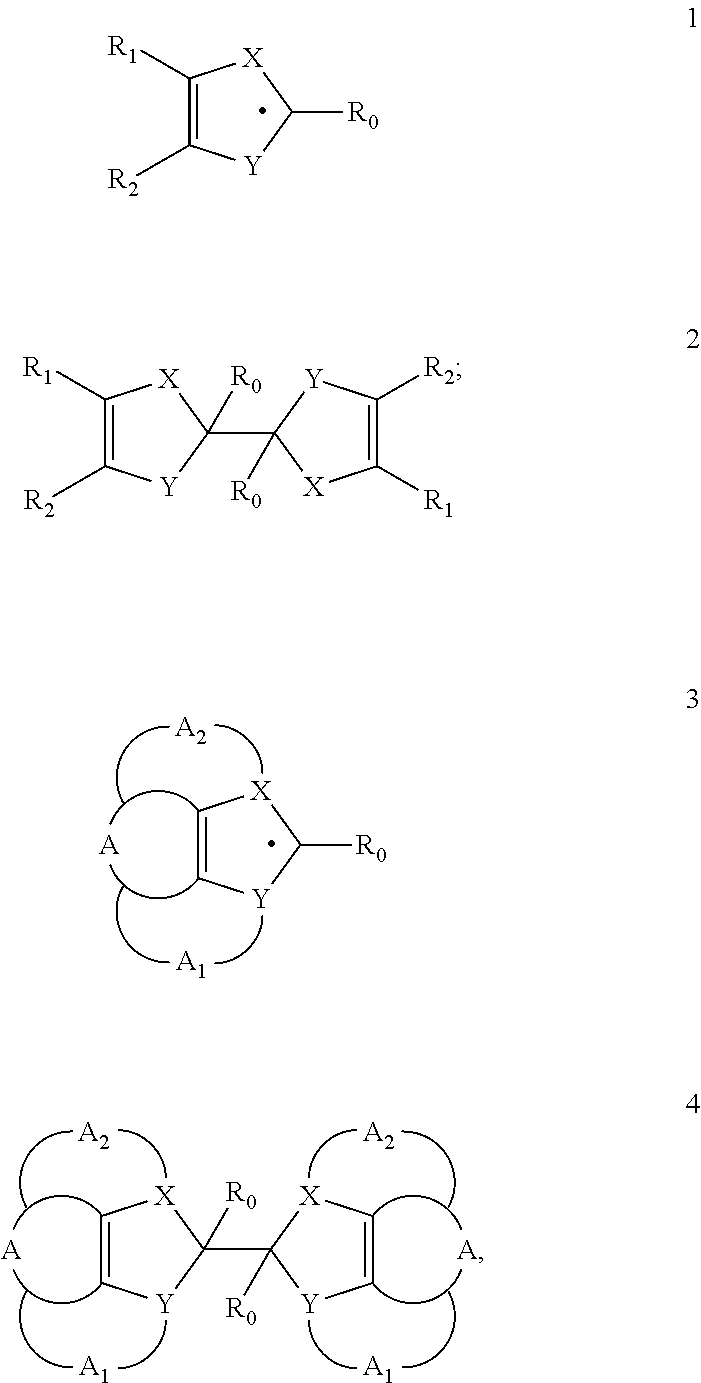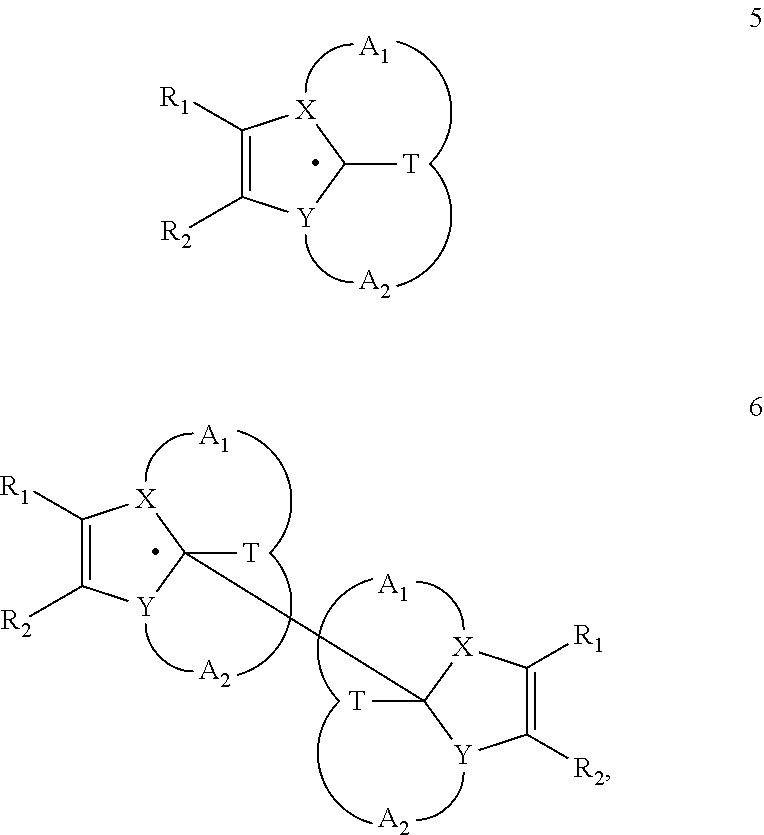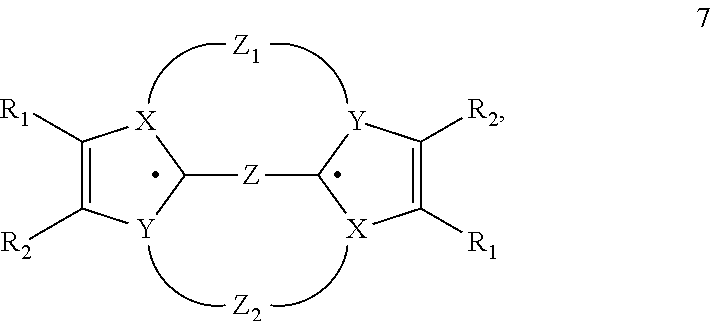Heterocyclic Radical or Diradical, The Dimers, Oligomers, Polymers, Dispiro Compounds and Polycycles Thereof, the Use Thereof, Organic Semiconductive Material and Electronic or Optoelectronic Component
a technology of heterocyclic radicals and diradicals, applied in the field of heterocyclic radicals or diradicals, the dimers, oligomers, polymers, dispiro compounds and polycycles thereof, can solve the problems of inability to use organic dopants, impaired function and stability of electronic components, and increased use of organic dopants
- Summary
- Abstract
- Description
- Claims
- Application Information
AI Technical Summary
Benefits of technology
Problems solved by technology
Method used
Image
Examples
example 1
2-Methylmercapto-1,3-dimethylbenzimidazolium perchlorate
[0043]Suspend 0.1 mol of 2-mercaptobenzimidazole in 70 ml of water. Add 0.3 mol of NaHCO3 and 0.5 mol of dimethyl sulphate and stir Overnight at room temperature. 12 ml of 50% tetrafluoroboric acid are added dropwise to the clear solution, which is cooled and the precipitate is removed by suction and recrystallized from 1,2-dichlorethane.
Fp.=160-3° C.
example 2
2-Piperidyl-1,3-dimethylbenzimidazolium perchlorate
[0044]Heat 0.01 mol of 2-methylmercapto-1,3-dimethylbenzimidazolium perchlorate with 0.01 mol of piperidine for 4th at reflux in 250 ml of dioxane. Remove the solids by suction and recrystallise from ethanol.
Fp. 179° C.
example 3
2-Dimethylaminobenzimidazolium chloride
[0045]Stir 0.05 mol of o-phenylenediaminium dichloride and 0,05 mol of dichloromethylene-N,N-dimethylimmonium chloride in 100 ml of dioxane at room temperature for 12 h. Then heat at reflux for 2.5-3 h, remove the solids by suction and wash with ether. Recrystallise from ethanol.
Fp. 293° C.
PUM
 Login to View More
Login to View More Abstract
Description
Claims
Application Information
 Login to View More
Login to View More - R&D
- Intellectual Property
- Life Sciences
- Materials
- Tech Scout
- Unparalleled Data Quality
- Higher Quality Content
- 60% Fewer Hallucinations
Browse by: Latest US Patents, China's latest patents, Technical Efficacy Thesaurus, Application Domain, Technology Topic, Popular Technical Reports.
© 2025 PatSnap. All rights reserved.Legal|Privacy policy|Modern Slavery Act Transparency Statement|Sitemap|About US| Contact US: help@patsnap.com



